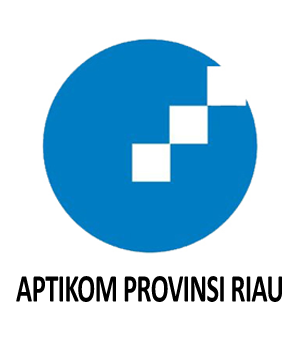The Effectiveness of The Marriage Management Information System (SIMKAH) Program as an Effort to Prevent Data Manipulation
Abstract
The problem in this study is that there are some Muslims who are trying to manipulate marriage data because they want to perform a nationwide legal double marriage. With this problem that occurs almost in all parts of Indonesia, the Director General of Bimas Islam issued the instruction number DJ.II/369 of 2013 on the implementation of the Marriage Management Information System (SIMKAH) in the Office of Religious Affairs (KUA) sub-district The problem in this study is that there are some Muslims who try to manipulate marriage data because they want to perform a nationwide legal double marriage. However, when using the SIMKAH application, there are also recurring server errors caused by dense access to the central SIMKAH server. The purpose of this study is to describe the effectiveness of the Marriage Management Information System Program (SIMKAH) to prevent data manipulation in the Religious Affairs Office (KUA) of Kefamenanu City District, TTU Regency. This research is a descriptive research with a qualitative approach, so the technical data analysis is presented in the form of a presentation or overview of the findings in the field, both in the form of data and information from interviews and other documents. The results of the research in the field show that since the use of SIMKAH application, KUA Kefamenanu Municipality recorded as many as 18 data manipulation experiments conducted in 2018-2020. This SIMKAH application is very effective in the effort to prevent manipulation of marriage data, because the SIMKAH application has been linked to the data of DUKCAPIL, so that only by entering the NIK of the bride and groom, all the data will appear automatically, starting from name, birthplace, date, address, parents' name and marital status. Future brides whose dates are married will need to provide a divorce certificate to register a second marriage, which will be uploaded to the SIMKAH application. If the person cannot provide the divorce certificate, the marriage registration process will not proceed.
Downloads
References
Kementerian Agama, “”Kartu Nikah, Ikhtiar Kemenag Tingkatkan Kualitas Layanan Publik”. Diakses 6 Oktober 2021, dari https://kemenag.go.id/read/kartu-nikah-ikhtiar-kemenag-tingkatkan-kualitas-layanan-publik-z53ja
Peraturan Menteri Agama Nomor 20 Tahun 2019 tentang Pencatatan Pernikahan.
Davis, Gordon B, “Kerangka Dasar: Sistem Informasi Manajemen, Bagian I Pengantar, Seri Manajemen No. 90-A,” PT Pustaka Binawan Pressindo, Jakarta. Pp. 112, 2002
Lulu Martina, et al., “Pengelolaan Aset Tetap pada Dinas Pendidikan Kepemudaan dan Olahraga Kabupaten Timor Tengah Utara,” Jurnal Sosiohumaniora KodePena. Vol. 1, pp. 150-169, Desember 2020.
Sadiah, Dewi. “Metode Penelitian Dakwah Pendekatan Kualitatif dan Kuantitatif,” Rosda Karya, Bandung. pp. 88, 2015.
Instruksi Direktur Jenderal Masyarat Islam Nomor DJ.II/369Tahun 2013 tentang Penerapan Sistem Informasi Manajemen Nikah (SIMKAH) Pada Kantor Urusan Agama (KUA) Kecamatan.
Effendy, Onong Uchjana. “Sistem Informasi Manajemen, cetakan ke 3,” CV. Mandar Maju, Bandung. 1989.
Lassa, Anita and Naif, Yohanes I, "Pengaruh Motivasi Kerja, Perilaku Pemimpin dan Iklim Organisasi Terhadap Kinerja Pegawai Kantor Inspektorat Kabupaten Timor Tengah Utara," Jurnal Manajemen, vol. 15, pp. 72-89, 2018.
Wibawani, Dian Tri, “Kepemimpinan Visioner Kepala Sekolah Sebagai Pemimpin Perubahan dalam Peningkatan Mutu Pendidikan,” diakses12 Oktober 2021, dari http://journal2.um.ac.id/jamp/ ISSN 2615-8574
Navis, Darwin, et al, “Pengaruh Kepemimpinan, Kompetensi Tenaga Kesehatan, Sarana Prasarana Terhadap Mutu Pelayanan Serta Dampaknya Pada Kepuasan Pasien Rawat Inap di Puskesmas Leuwisadeng,” Muhammadiyah Public Health Journal, vol. 1, pp. 32-41, 2020.
Nuraida, Ida. “Manajemen Administrasi Perkantoran,” Kanisius, Yogyakarta. Pp. 35, 2008.
Hardiyansyah, “Kualitas Pelayanan Publik (Konsep, Dimensi, Indikator dan Implementasinya),” Gava Media, Yogyakarta. Pp. 37, 2018.
Hartono, Bambang, “Sistem Informasi Manajemen Berbasis Komputer,” Rineka Cipta, Bandung. pp. 146, 2013.
Nuzulla, Agustina, “Bab II Landasan Teori Pengertian Analisis Sistem”. Diakses 6 Oktober 2021, dari https://elib.unikom.ac.id/files/disk1/609/jbptunikompp-gdl-elvhareyza-30410-9-5.babii.pdf
Qolbi, Insan Khoirul, “Simkah Web, Aplikasi Tersibuk di Kemenag,” Diakses 7 Oktober 2021, dari https://kemenag.go.id/read/simkah-web-aplikasi-tersibu-di-kemenag-8nxb2
Kartono, Kartini "Psikologi Kerja," Rineka Cipta, Jakarta. pp. 33-37, 2001.
Martoyo, Susilo., "Manajemen Sumber Daya Manusia,"BPFE, Yogyakarta pp. 3-10, 2002.
Daryanto., “Evaluasi Pendidikan,” Rineka Cipta, Jakarta pp. 51, 2008.
Sedarmayanti, “Manajemen Sumber Daya Manusia dan Produktivitas Kerja,” Mandar Maju, Bandung. pp. 21, 2001.
Taylor, Margaret C Martha and Hendricks, Michael, “Problem Outcomes Pendidikan Tinggi di Indonesia Pada Era Revolusi Industri Tahap Keempat (RI 4.0),” 2020. [online]. Tersedia: http://piuii17.blogspot.com/2020/09/problem-outcomes-pendidikan-tinggi-di.html?m=1
Yunita, Adiny Dwi. “Implementasi pemanfaatan sistem informasi manajemen nikah (SIMKAH) dalam meningkatkan pelyanan pernikahan: Studi Deskriptif di Kantor Urusan Agama Cimahi Selatan,” 2021. [online]. Tersedia: http://digilib.uinsgd.ac.id/41845/
Abubakar, Al Yasa’ and Purnama, Muhammad Ilham, “Efektivitas Penerapan SIMKAH di KUA Syiah Kuala Kota Banda Aceh,” Jurnal Hukum Keluarga dan Hukum Islam: Samarah, vol. 3, pp. 1-31, 2019.
Riduwan. “Metode dan Teknik Menyusun Tesis,” Alfabeta, Bandung. pp. 102, 2009.
Koranth, Laweey F. “Auditing Concepts and Applications, A Risk-Analysis Approach, 5th Edition,” West Publishing Company. Pp. 19, 2002.
Robbins, Stephen P. “Perilaku Organisasi. Edisi Kesepuluh,” PT Indeks: Kelompok Gramedia pp. 52, 2011.
Copyright (c) 2022 Bambang Hardiyanto Laga, Aplonia Pala, anita lassa

This work is licensed under a Creative Commons Attribution-ShareAlike 4.0 International License.
This is an open-access article distributed under the terms of the Creative Commons Attribution-ShareAlike 4.0 International License which permits unrestricted use, distribution, and reproduction in any medium. Users are allowed to read, download, copy, distribute, search, or link to full-text articles in this journal without asking by giving appropriate credit, provide a link to the license, and indicate if changes were made. All of the remix, transform, or build upon the material must distribute the contributions under the same license as the original.















